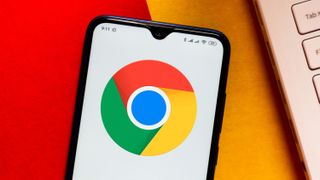Google Chrome is killing off its Android Lite Mode
Search giant says Lite Mode is no longer required as mobile data has decreased in cost

As the cost of cellular data plans has decreased significantly in recent years, Google has revealed its plans to discontinue its Lite Mode feature in Google Chrome on Android.
First released back in 2014 under the name “Data Saver”, the feature was later rebranded as “Lite Mode” in 2019 and was designed to help those with slow or limited data connections.
When enabled on an Android smartphone, Lite Mode would send some of a user's web traffic through Google's own servers before it was downloaded on their device. If pages loaded slowly, the search giant's servers would simplify them so that less data would be downloaded to a user's device.
While Lite Mode helped those with less mobile data avoid being hit with heavy data overage charges, the feature didn't work with private browsing enabled and it also prevented users from accessing pages on a local network such as an internal company site.
Sunsetting Chrome Lite Mode
In a new support document, Google has revealed its plans to sunset Chrome Lite Mode with the release of Google Chrome 100 in March of this year.
The feature will be turned off for those still using it on March 29 as the search giant has observed a decrease in the cost for mobile data in a number of countries in recent years. At the same time, Google has also made improvements to Chrome to “further minimize data usage and improve web page loading”.
Although Lite Mode is being discontinued, the company remains committed to ensuring Chrome can deliver a fast webpage loading experience on mobile going forward.
Are you a pro? Subscribe to our newsletter
Sign up to the TechRadar Pro newsletter to get all the top news, opinion, features and guidance your business needs to succeed!
If you still want to limit the amount of data your Android smartphone uses, you can try restricting background data for individual apps in settings, limit how often apps sync and what they update, use some of your apps offline and try using Pocket or a similar service to download and save web pages to read later when connected to Wi-Fi.
- We've also rounded up the best browsers and the best business smartphones
Via 9to5Google
After working with the TechRadar Pro team for the last several years, Anthony is now the security and networking editor at Tom’s Guide where he covers everything from data breaches and ransomware gangs to the best way to cover your whole home or business with Wi-Fi. When not writing, you can find him tinkering with PCs and game consoles, managing cables and upgrading his smart home.
Most Popular

